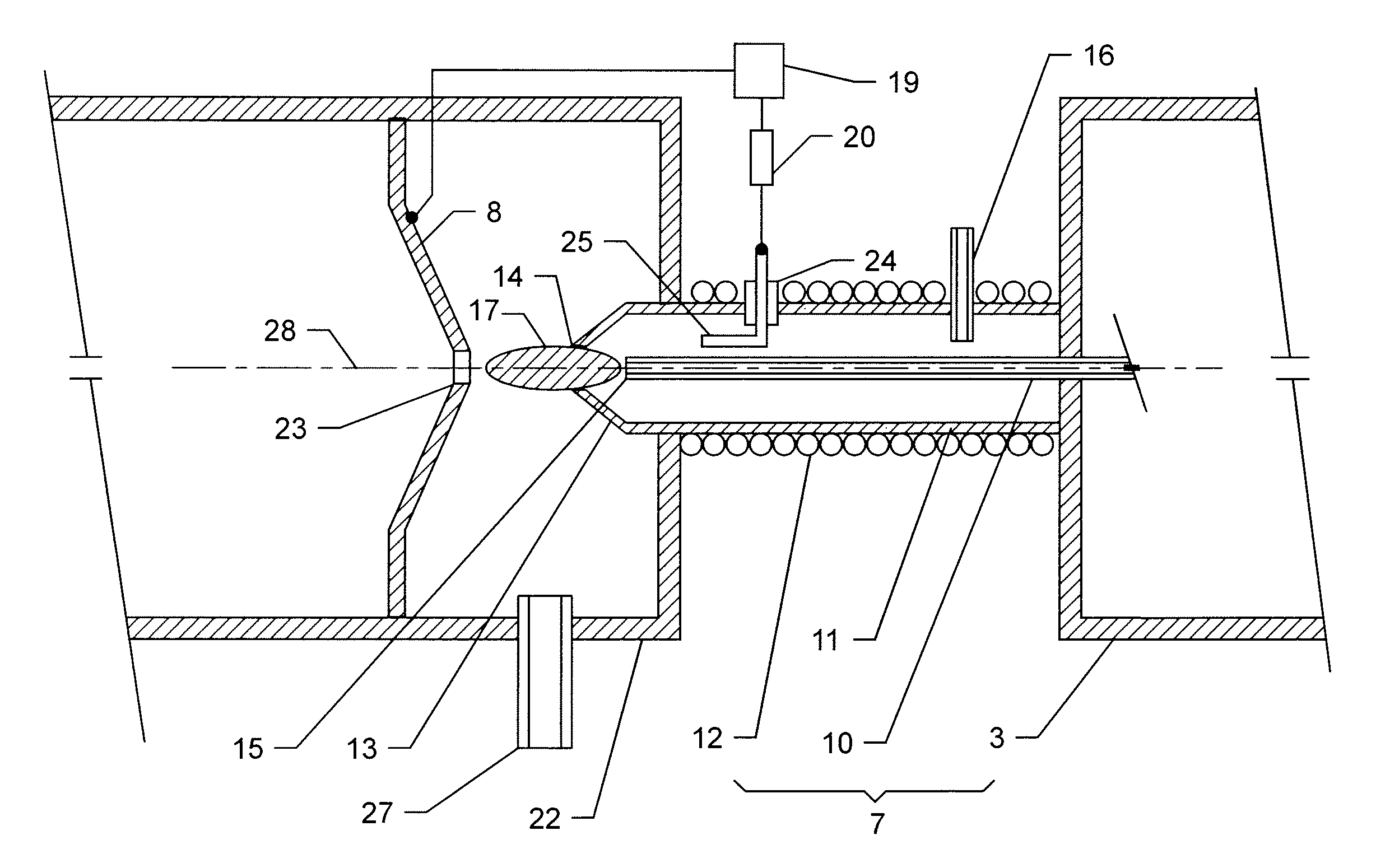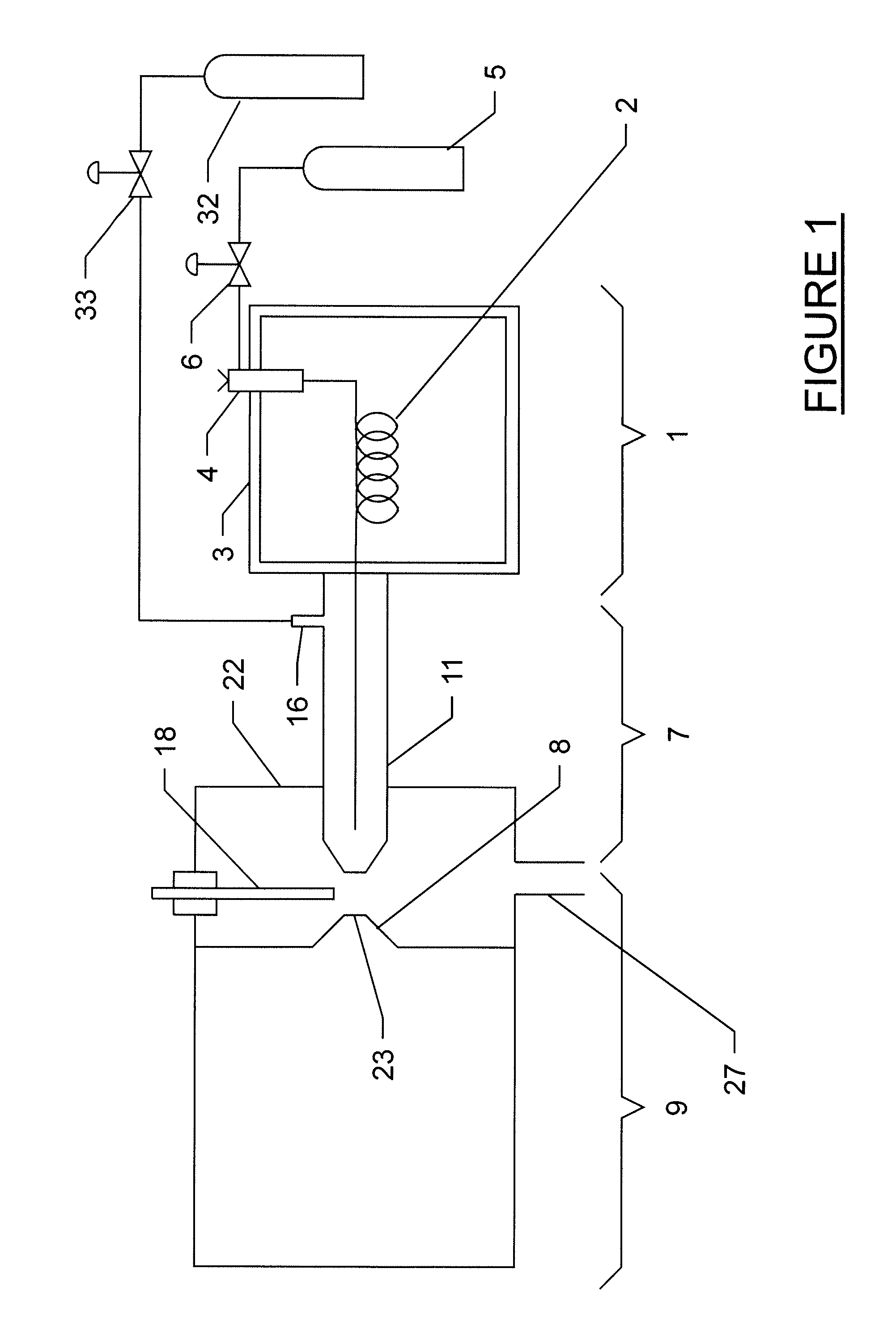Apparatus And Methods For Gas Chromatography - Mass Spectrometry
a mass spectrometry and apparatus technology, applied in the field of apparatus and methods for mass spectrometry analysis of analyte materials, can solve the problems of inability to meet expectations, and insufficient sensitivity of the technique, so as to reduce the ionization volume, increase the concentration of analyte molecules, and increase the number of analyte ions generated
- Summary
- Abstract
- Description
- Claims
- Application Information
AI Technical Summary
Benefits of technology
Problems solved by technology
Method used
Image
Examples
Embodiment Construction
[0032]An embodiment of the invention comprising a gas chromatograph and a mass spectrometer is shown in FIG. 1. A gas chromatograph 1 comprises a capillary column 2 inside a temperature controlled oven 3. Analyte is introduced on to the column 2 through a sample injector 4 into a flow of a first gas from a reservoir 5. A flow controller 6 is provided to maintain a constant flow of the first gas, which may conveniently comprise helium. A flow of about 1 ml / minute would be suitable for many capillary GC columns. The column 2 is a coil of metal or glass capillary tubing, typically 250 μm internal diameter and 350 μm outside diameter, internally coated with a stationary phase suitable for effecting separation of different chemical components comprised in the analyte. The effluent from the column 2, comprising analyte molecules in a flow of the first gas at a pressure approximately equal to or slightly greater than atmospheric pressure, passes into an interface device generally indicated...
PUM
 Login to View More
Login to View More Abstract
Description
Claims
Application Information
 Login to View More
Login to View More - R&D
- Intellectual Property
- Life Sciences
- Materials
- Tech Scout
- Unparalleled Data Quality
- Higher Quality Content
- 60% Fewer Hallucinations
Browse by: Latest US Patents, China's latest patents, Technical Efficacy Thesaurus, Application Domain, Technology Topic, Popular Technical Reports.
© 2025 PatSnap. All rights reserved.Legal|Privacy policy|Modern Slavery Act Transparency Statement|Sitemap|About US| Contact US: help@patsnap.com



